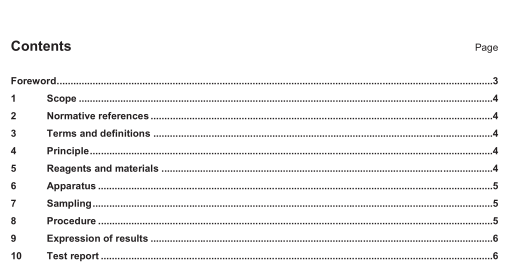EN 1430:2009 – Bitumen and bituminous binders – Determination of particle polarity of bituminous emulsions

1 Scope
This European Standard specifies a method for the determination of the particle polarity of bituminous emulsions.
WARNING — The use of this standard may involve hazardous materials, operations and equipment.
This standard does not purport to address all of the safety problems associated with its use. It is the responsibility of the user of this standard to establish appropriate safety and health practices and determine the applicability of regulatory limitations prior to use.
2 Normative references
The following referenced documents are indispensable for the application of this document. For dated references, only the edition cited applies. For undated references, the latest edition of the referenced document (including any amendments) applies.
EN 58, Bitumen and bituminous binders – Sampling bituminous binders
EN 12594, Bitumen and bituminous binders – Preparation of test samples
EN ISO 3696, Water for analytical laboratory use – Specification and test methods (ISO 3696:1987)
ISO 5280, Xylene for industrial use – Specification
3 Terms and definitions
For the purposes of this document, the following definition applies.
3.1
particle polarity
sign of the electric charge carried by particles in ionic emulsions
NOTE In cationic emulsions, particles have positive polarity. In anionic emulsions, particles have negative polarity.
4 Principle
A direct or rectified current is passed through a bituminous emulsion between two parallel plate electrodes.
Deposition of a layer of bitumen on the anode indicates negative polarity and that the emulsion is anionic.
Deposition of particles on the cathode indicates positive polarity and that the emulsion is cationic.
5 Reagents and materials
Use only reagents of recognized analytical grade and water conforming to grade 3 of EN ISO 3696.
5.1 Efficient rinsing agent
Efficient rinsing agents or xylene, conforming to ISO 5280, can be used.
5.2 Propan-2-ol.
5.3 Ethanol , 96 % minimum or methylated spirit 99 %.
6 Apparatus
Usual laboratory apparatus and glassware, together with the following:
6.1 Electrical circuit, (see Figure 1) consisting of the following components:
6.1.1 Current source, capable of supplying a direct or rectified current of 8 mA at a potential of 4,5 V to 15 V for 30 min.
6.1.2 Milliammeter, with a full scale deflection of 10 mA.
6.1.3 Potentiometer.
6.1.4 Electrodes, two stainless steel plates approximately 100 mm long, 25 mm wide and 1,0 mm thick, with an insulating device to hold the plates parallel and 12 mm apart in the emulsion (see Figure 1).
6.1.5 Insulator, polytetrafluoroethylene resin square rod, virgin electrical grade, (12 ± 2) mm long, (25 ± 2) mm wide and (15 ± 5) mm thick.
6.2 Glass beaker, 150 ml or 250 ml capacity.
6.3 Glass rod, approximately 100 mm long and 6 mm thick or other suitable device that is capable of insulating and suspending the electrode assembly in the emulsion.
6.4 Timing device, stop watch or other suitable device.
7 Sampling
The laboratory sample shall be sampled in accordance with EN 58 and shall be prepared in accordance with EN 12594.
The sample shall be divided into two portions; in case of doubt concerning the results, both portions shall be tested.
8 Procedure
8.1 Preparation of electrodes
Clean the electrodes (6.1.4) in the following sequence:
wash with water;
wash with propan-2-ol (5.2) or ethanol or methylated spirit (5.3);
EN 1430:2009 – Bitumen and bituminous binders – Determination of particle polarity of bituminous emulsions